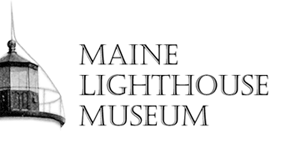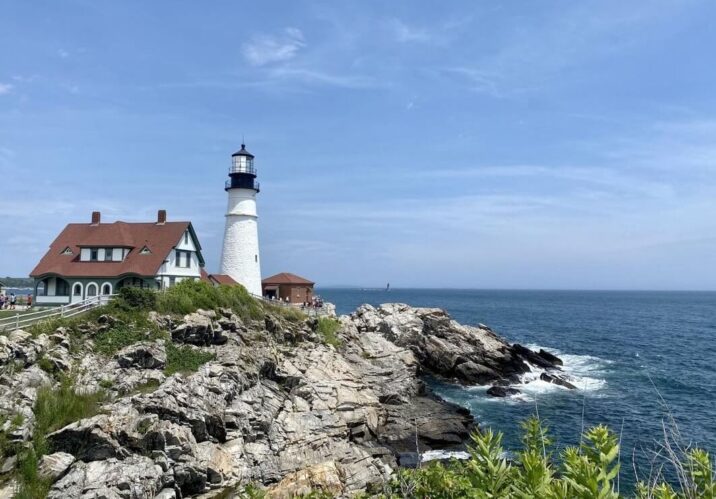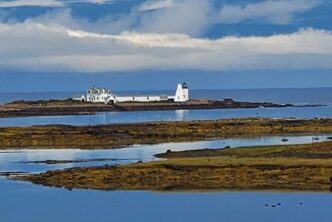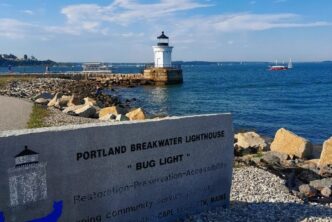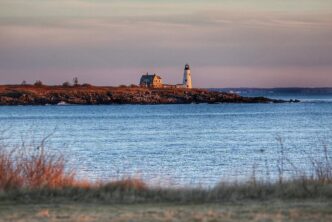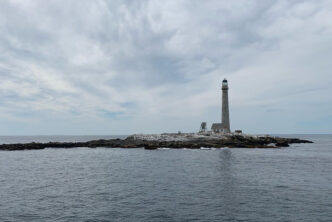Portland Head Light, one of only four lighthouses still standing from George Washington’s presidency, marks Portland Harbor on Casco Bay. The 1790-built tower is situated near Portland Head in Cape Elizabeth. It offers beautiful views — soaring over Casco Bay’s signature rocky shoreline, which juts out dramatically into the water below.
History of Portland Head Lighthouse
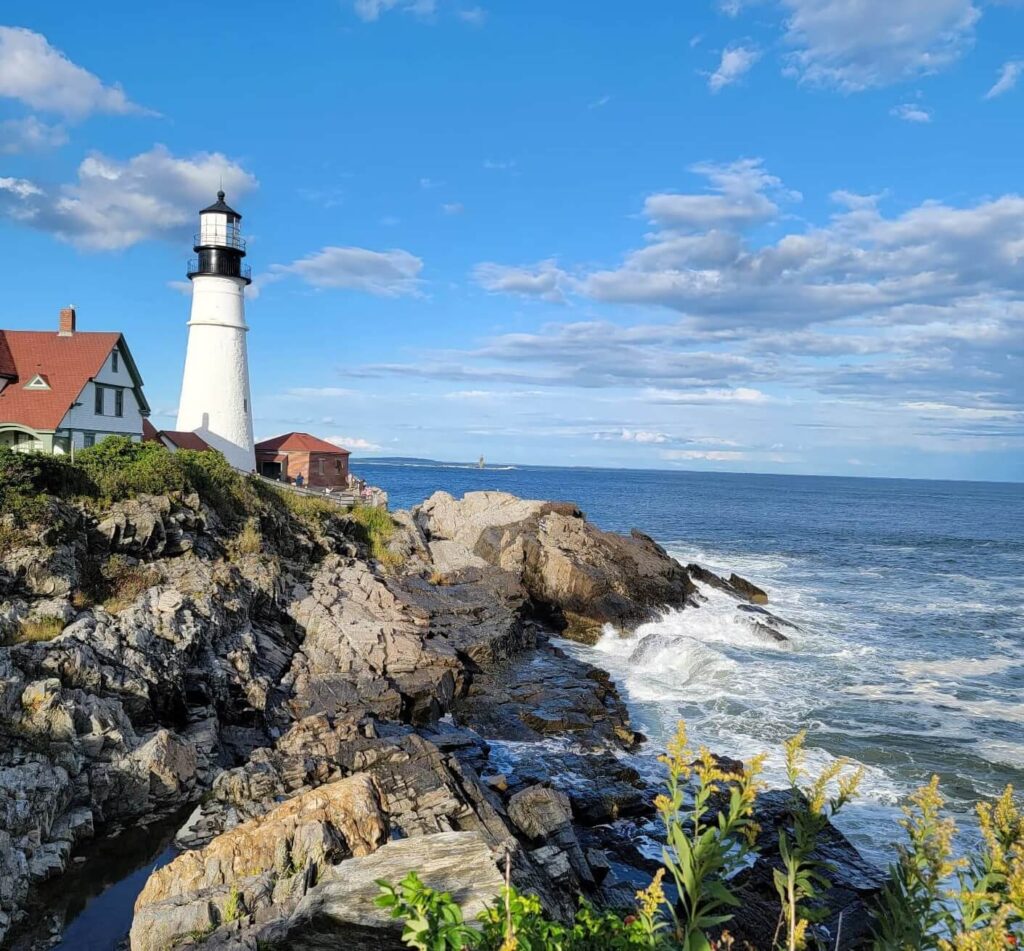
Portland Head Lighthouse enjoys enduring appeal and fame not only in the state of Maine but across the entire Northeastern United States. There are many reasons for this — but chief among them is a sense of unspoiled tradition.
The General Court of Massachusetts issued the station’s first order in 1787, allocating $750 for the building of the beacon.
When the United States government took control of all lighthouses in 1790, an extra $1,500 was made available for the station’s completion. The light, made of rubblestone with a brick lining, was built over the course of four years.
Indeed, the lower part of the tower remains today in the same form as when it was originally built well over two centuries ago. That tower was first illuminated on January 10, 1791 and stands tall to this day.
The construction had a distinctly local flavor right from the beginning. Rubblestone from the surrounding area and coastline were used to build the tower. Furthermore, John Nichols and Jonathan Bryant, two local masons, led the building effort.
Bryant also had a lime kiln where he burnt limestone mined from Rockland quarries. The original building had a 15 foot lantern and was 72 feet high.
Twenty feet were taken off the tower in 1813. However, after the British ship Bohemian capsized in 1864, resulting in the deaths of 40 immigrants, the tower was elevated close to its previous height again, and its fourth-order Fresnel lens was replaced with a second-order one. Nevertheless, another 21 feet were taken off in 1883.
It was elevated again with bricks in 1885 in response to popular outcry. However, a more authentic restoration effort followed in 1900 using the original stones from the 1813 removal.
The first keepers’ quarters, a one-story cottage measuring 34 x 20 feet, was constructed in 1816. A new and updated keeper’s residence was built in 1891 on top of the original cottage’s foundations.
The Portland Head Lighthouse has undoubtedly played a significant role in Maine’s culture and maritime history over the centuries.
The tower has loyally served mariners for over two centuries but is equally beloved as a picturesque and beautiful landmark.
Today, the 80-foot conical tower of the Portland Head Light shines for 24 miles at 102 feet above sea level.
The station was automated in 1989, and a DCB-224 aerobeacon that flashes white every four seconds was added in 1991. A reproduction of the foghorn structure from 1880 was built in 1975.
The original keeper’s quarters are now home to the Museum at Portland Head Light.
A rock with the inscription “in memory of the ship Annie C. Maguire, wrecked here, December 24, 1886” is also close by. The keeper and his family saved the 14 passengers on board that ship, but a few days later, a storm sank the vessel.
In the beginning, Portland Head Light was a popular destination for writer Henry Wadsworth Longfellow, who is credited with drawing inspiration for the romantic lighthouse in his poem “The Lighthouse.”
The U.S. Coast Guard has access to the station’s optical and audible signals since it is a functioning navigational aid. Today, the property itself is owned by the Town of Cape Elizabeth.
Portland Head Lighthouse is an iconic landmark woven into Maine’s maritime past. It was built from rubblestone sourced in the area and constructed by local stonemasons. Numerous improvements and modifications have taken place over the centuries, but the main section of the tower retains its original character and materials.
Planning Your Visit
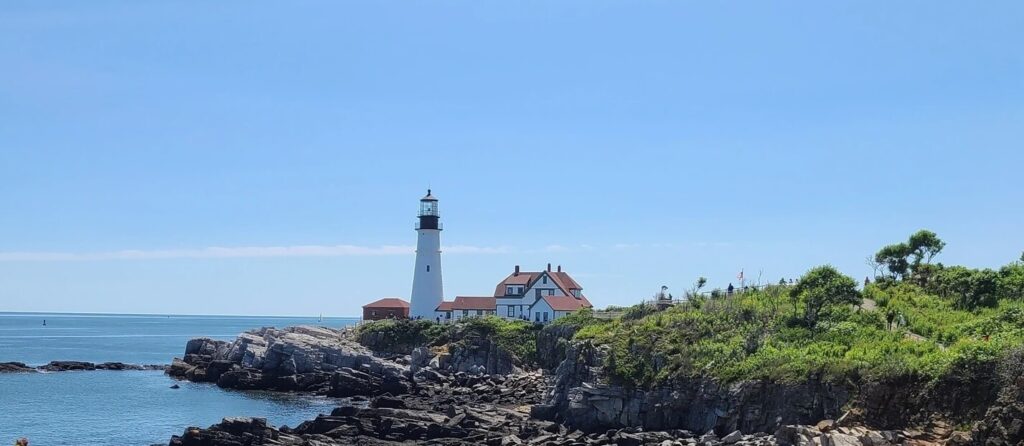
Visitors to Portland Head Light arrive at Cape Elizabeth’s Fort Williams Park, situated at 1000 Shore Road. This 90 acre park is home to the lighthouse among numerous other historic buildings.
Although visitors can enjoy the museum and grounds, and capture stunning up close photographs in the process, the light tower itself is open for tours only one day per year (see FAQs below for this and more information on parking, hours, and fees).
What you’ll see
The site’s light tower, keepers’ quarters, whistle house, paint storage, and garage are all part of the complex of structures. From the base to a stone ledge part way up, you’ll notice the tower is constructed of haphazard stone fragments.
Brickwork dominates from this ledge to the metal structure housing the light itself. Stone and brick are also used in the construction of the tower chamber and whistle house.
The keepers’ quarters (now a museum) is a wooden structure with clapboard on the exterior. The foundations for each structure are made of stone and brick masonry.
A duplex with a mixed hip and gable roof serves as the keepers’ quarters. The first level houses a living room, dining room, and kitchen, with the second level home to numerous bedrooms.
Directions
- Take Route 77 south to South Portland from the 295 in Portland
- Follow Cottage Road to the right after turning left onto Broadway
- At the town border of Cape Elizabeth, Cottage Road changes to Shore Road
- Take Route 1 north to Oak Hill in Scarborough if coming from the south
- To get to Cape Elizabeth, take Route 207 to the right, then Route 77 to the left
- Right-turn onto Shore Road
- Fort Williams Park is home to Portland Head Light
Portland Head Lighthouse is located inside the 90 acre Fort Williams Park, operated by the town of Cape Elizabeth. Admission is free but donations are accepted. The light tower is open for tours just one day per year but the grounds and converted keepers’ quarters (now a museum) can be enjoyed daily.
Interesting Facts
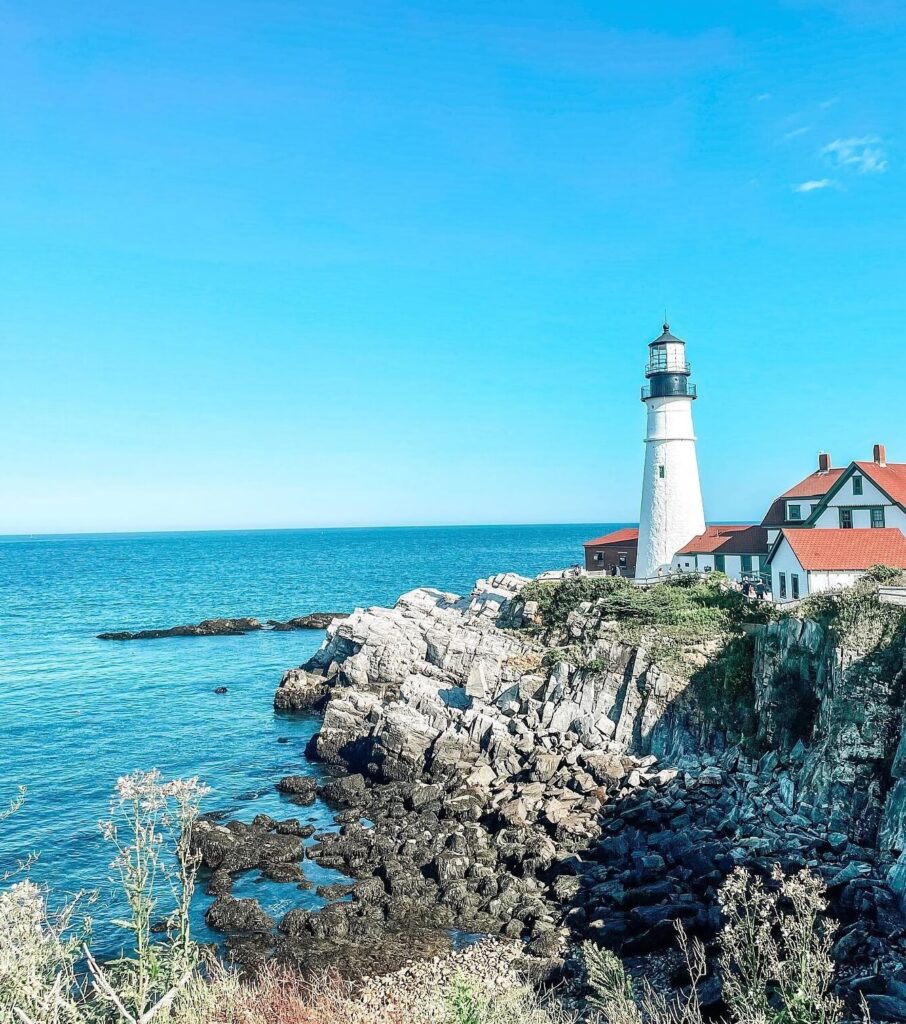
There were no lighthouses in Portland Harbor, or anywhere else along the coast of Maine for that matter, despite the fact that Portland was the sixth busiest port in America in the late 1700s.
Dozens of businessmen from Portland petitioned the Massachusetts government in 1784 for a light to be installed at Portland Head to mark the entrance to Portland Harbor because they were worried about the effects shipwrecks were having on their businesses.
As mentioned earlier, construction was indeed authorized for $750 and started in 1787, but owing to a lack of funding, it was soon stopped.
Congress allocated an extra $1,500 in 1789, only a few months into George Washington’s administration, to be used to finish building the light tower.
As a result, Portland Head Light was the first lighthouse to be paid for by the newly established federal government. Costs were kept low by contracting local stonemasons to construct the lighthouse out of rubblestone found nearby.
When the tower was being built, it became clear that the light would be obstructed from the south, therefore it was decided to increase its height to 72 feet from the intended 58 feet.
Over the century to come after its completion, the light tower underwent a number of improvements and modifications. The keeper’s home and the light tower were reportedly in disrepair by 1810.
Repairs were undertaken to shore up the construction and replace decaying wood.
Mistakes made in the construction of the top part of the tower led to problems with persistent leaks. In addition, the lantern was deemed unfit for purpose. The authorities removed 25 feet from the tower’s height and installed a new light.
Over the decades to come, the tower was walled with brick, and a cast-iron spiral staircase was constructed in 1855. The light was again upgraded in 1864 with the introduction of a second-order Fresnel lens.
Although the tower was elevated by 20 feet, almost returning to its previous height, the Lighthouse Board believed that Portland Head Light was of reduced navigational importance after Halfway Rock Light was finished in 1871.
In 1883, the tower was once again reduced in height by 20 feet, and the second-order lens was changed back to the inferior fourth-order lens.
Protests from local shipping interests quickly followed and by early 1885 the tower had been raised back to its original height and a second-order lens was once again fitted.
In 1929, Portland Head Light became electrified. The light tower was dimmed for three years during World War II, like many other lights around the eastern shore.
The second-order Fresnel lens was replaced by aerobeacons in 1958.
An event honoring the 200th anniversary of the Lighthouse Service was conducted at Portland Head Light in August 1989. The Coast Guard keepers were transferred at that time, and the light was automated.
In 1992, the former keeper’s home became a museum. The tower’s original second order Fresnel lens is one of the exhibits.
The title to the lighthouse was transferred to the Town of Cape Elizabeth in October 1993.
Key Information
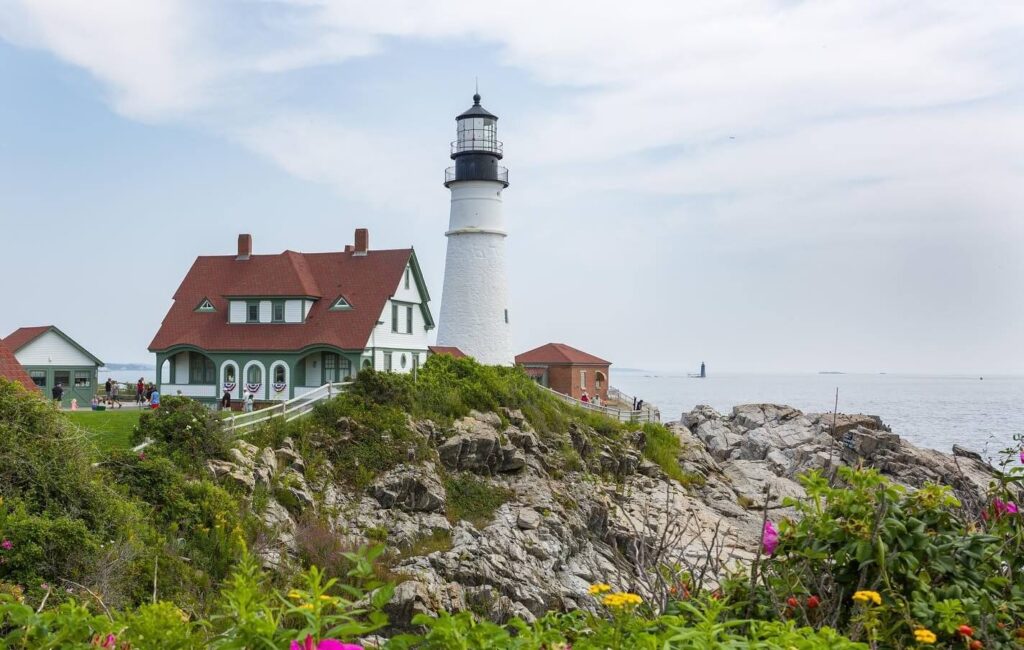
| Location | Near Cape Elizabeth, ME (43° 37′ 23″ N, 70° 12′ 28″ W) |
| Established | 1790 |
| Height | 80 feet (102 feet above sea level) |
| Type | Conical tower |
| Construction | Rubblestone/Brick |
| Architect | John Nichols & Jonathan Bryant |
| Sequence | White light (ON – 4 seconds, OFF – 4 seconds) |
| Fog Horn | 1 sound every 15 seconds |
| National Register of Historic Places | Added 1973 |
| Administrative Address | The Museum at Portland Head Light (100 Shore Road, Cape Elizabeth, ME, 04107) & Phone (207) 799-2661 |
FAQ
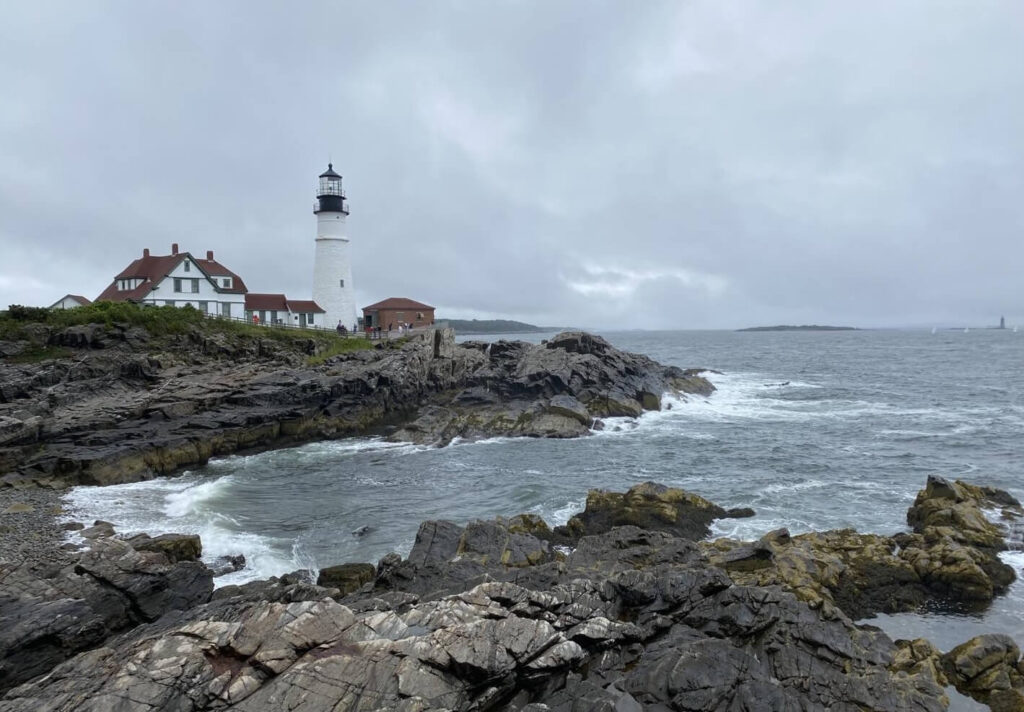
Where is the best place to park?
Portland Head Lighthouse is situated inside Fort Williams Park, which in turn is owned and operated by the Town of Cape Elizabeth. Strictly speaking, there is no admission fee and parking within the complex is also free. However, from April 1 – November 15, “premium” parking spots do come with a charge. The overflow lot is always free.
What other facilities and views are available?
Fort Williams Park is sizeable at 90 acres and thus offers space for a range of activities to suit different tastes. There are picnic tables, recreation/sports areas, other historic buildings, and opportunities for short hikes.
The light tower itself is only open to the public once annually in honor of the Maine Lighthouse Open Day event, typically held in September.
The museum and gift store are open from 10am – 2pm (M-F) and 10am – 4pm (weekends) from Memorial Day to Indigenous Peoples Day. The museum admission fee is $2 for adults, $1 for children (6-18) and free for younger children.
More interesting things to see and do in the park can be found on the official website. They include sustainability projects, the Blair & Keyes batteries, the Goddard Mansion, a beach area, and a children’s garden.
What are the best dining and accommodation options nearby?
During peak visitation season, the park itself hosts numerous food vendors with a range of interesting options. Among them are a specialty gelato maker, a sandwich joint, a hot dog vendor, and a place for fresh lobster rolls.
Although Portland Head Lighthouse is easily accessible by car for those staying in the city of Portland, there are a number of closer accommodation options. Among them is the Sea Rose guesthouse with views over the bay.
